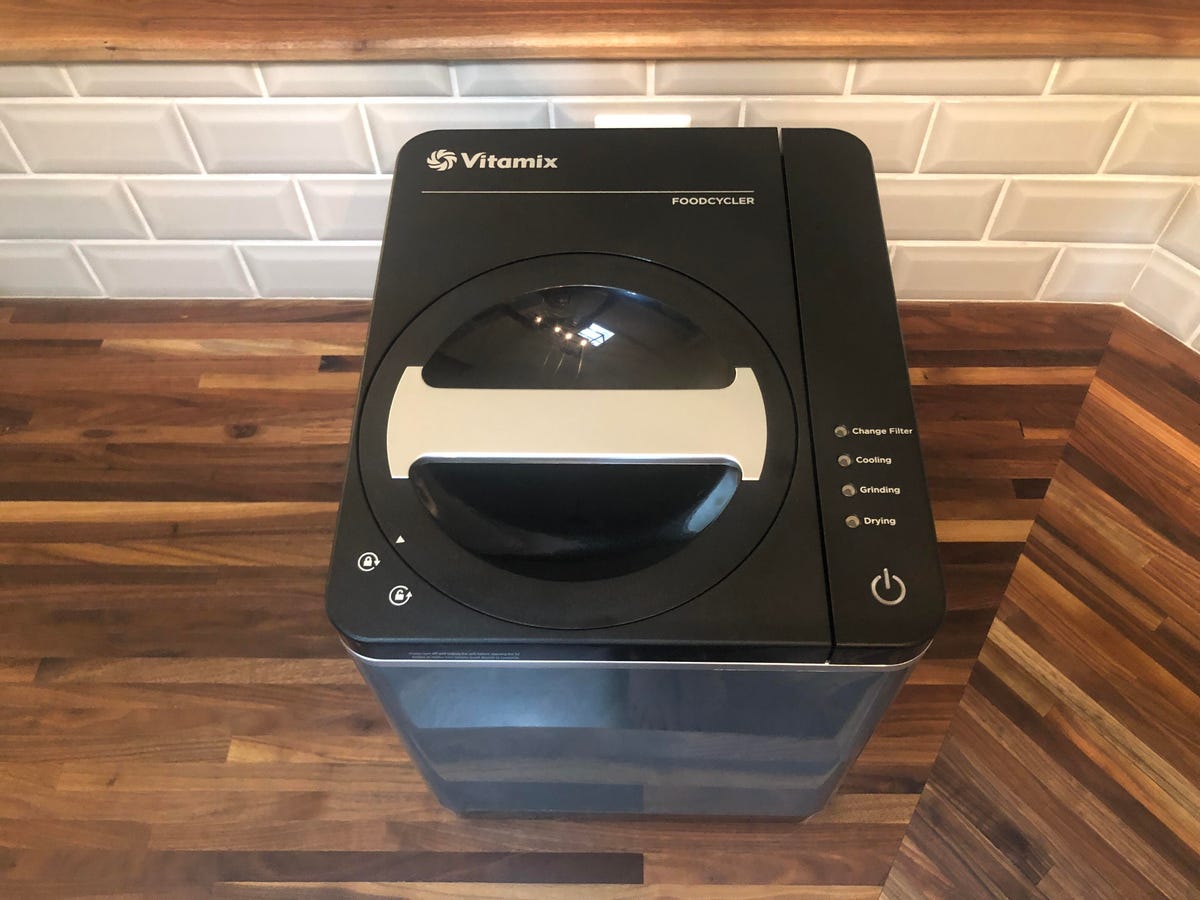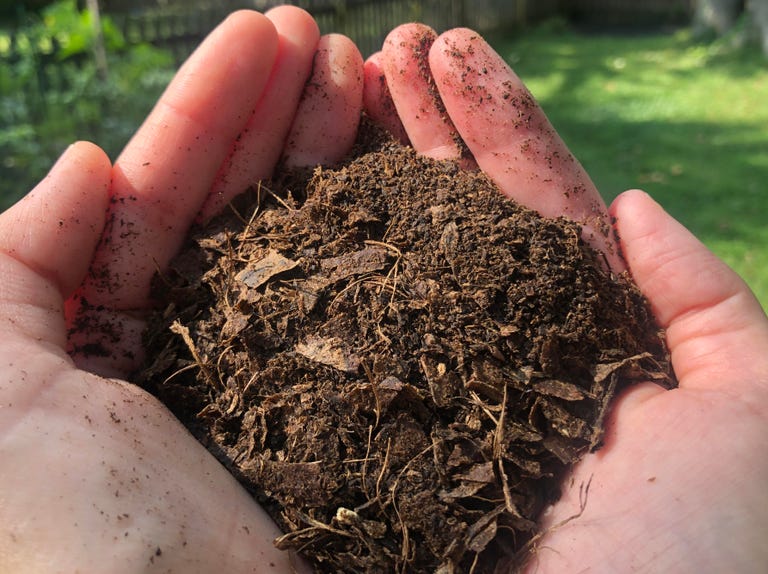 Why You Can Trust CNET
Why You Can Trust CNET Vitamix FoodCycler turns eggshells, banana peels and food scraps into compost fast
Now I just need to figure out what to do with all this compost.
Summer may be winding down, but my fall garden is just getting started, so I was eager to try out the Vitamix FoodCycler FC-50. The FoodCycler is a kitchen appliance that turns food scraps into compost. Compost provides nutrients to soil and helps feed your garden flowers, fruits and vegetables, as well as other plants in your yard.
Like
- It's easy to use
- It's fast
Don't like
- It's expensive
- It's a little noisy
At $400, it's definitely expensive, but it's also efficient, easy to use and avoids the pest concerns associated with traditional outdoor compost bins. It's also a fantastic choice for folks living in apartments. Its small half-gallon capacity isn't ideal for anyone with a lot of food waste on a daily basis -- and It does make noise as it works, but it isn't much louder than a standard dishwasher.
The Vitamix FoodCycler FC-50 is a solid option for anyone with small-scale garden and landscaping needs who wants to repurpose food otherwise bound for the landfill.
Read more: I've reached the 'making my own butter' phase of quarantine

The FoodCycler weighs 27 pounds and measures 14.3 inches tall by 11 inches wide with a depth of 12.6 inches. It can go on a countertop, but it takes up too much space in my small kitchen.
Making compost with the Vitamix FoodCycler FC-50
The FoodCycler has a black and gray finish and a simple interface -- a single power button to start a cycle and four status lights to tell you when it's drying, grinding or cooling your compost and when you need to change the two carbon filters. One replacement pack of two filters costs $25.
The main lid locks into place to start a cycle, but the locking mechanism and its built-in handle also make it easier to move the FoodCycler as needed. Inside you'll find a removable bin with a metal handle and a fill line to let you know when it's full. Vitamix says you shouldn't overfill the bin or press the existing food scraps down to make room for more.
The bin holds a half-gallon of food scraps.
I kept the bin on my countertop while I prepped food, so I could easily discard coffee grounds, sweet potato peels, eggshells and lots of other scraps throughout the day. The FoodCycler is able to process fruit and vegetable scraps, but avoid hard pits from peaches, avocados and other fruits. It also can't handle pineapple leaves. Citrus rinds and fruits with a lot of sugar like bananas and grapes should only be added occasionally.
The FoodCycle can also handle chicken and fish bones, meat scraps, cereal, cheese, eggs and eggshells, coffee grounds, coffee filters, tea bags, legumes, beans, seeds and pet food. Add starchy foods like bread and rice sparingly, as well as sauces, dressings and soups, nut butter and jelly or jam. Don't put candy, gum, cooking oil, beef and pork bones in the FoodCycler.
It generally took my husband and I about two days to fill the FoodCycler; one if we were doing a lot of cooking. Fortunately, Vitamix provides a second lid specifically to reduce any odors coming from the bin before you start a cycle.
This lid gets rid of smells.
Once your scraps reach the fill line, it's time to return it to the FoodCycler. Use the arrows on the bin and on the inside of the FoodCycler to position the bin correctly before starting a cycle -- attach the locking lid, plug it in and press the power button.
Vitamix says most cycles should take between 4 and 8 hours, but all three of the cycles I tried took 4 to 5 hours total, varying based on what was in the bin and how much I filled it. I don't eat much meat, so I didn't have any bones or meat scraps to add, but all three tests had different combinations of fruits and vegetable scraps, peels, eggshells and coffee grounds.
The FoodCycler was loud enough to be distracting at certain points, mainly during the "grinding" stage of the process, so I'd suggest running it overnight or moving it somewhere out of the way to run a cycle. After it moves through the drying, grinding and cooling phases, the lights turn off and your compost is ready.
A full half-gallon bin of scraps yields about a cup of compost -- a little less than I expected, but plenty for a small garden if you run the FoodCycler regularly. And if you end up with extra compost, you can always store it to use in future seasons or give it to a friend who doesn't have their own compost bin.
Keep in mind that different plants need different nutrients. Vitamix says adding a variety of different foods is the best thing for the FoodCycler, but that's also true for your soil. That said, my blueberry plants need more acidic soil than my eggplants, so I'll factor that in when I begin using this compost in our garden.
Compost!
The verdict
At nearly 400 bucks, the Vitamix FoodCycler FC-50 is expensive and it makes noise as it works. It also has a pretty small capacity that won't make sense for folks with large gardens -- or for anyone who produces a lot of food waste daily.
That said, the FoodCycler is a great way to reuse food scraps that would otherwise go straight in your garbage bin. It's simple to use, works fast and avoids pests that might be curious about an outdoor compost bin. It's also a solid choice for apartment-dwellers who can't have a traditional compost bin.


